A detailed guide to compile your Volatility 2.6.1 and 3 binaries for Windows.
Introduction
Volatility is a popular Python-based memory analysis framework which is used by almost everyone interested in memory forensics. I like many use the tool by directly running the script in Python but I have seen quite a few scenarios where having the tool as an executable binary is much preferred. Also though Volatility 2.6.1 is no longer being developed it is still being used by many so I am including how to compile it in this blogpost as well.
Compiling Vol 2.6.1 For Windows
Step 1 - Installing Python 2.7.18
Head over to https://www.python.org/downloads/release/python-2718/ and download the Windows x86-64 MSI installer. Volatility 2 is built on Python 2 and Python 2.7.18 was the last version released. When Installing Python make sure to click on “Add Python to PATH”. This helps you to call/run Python from any folder in the system.
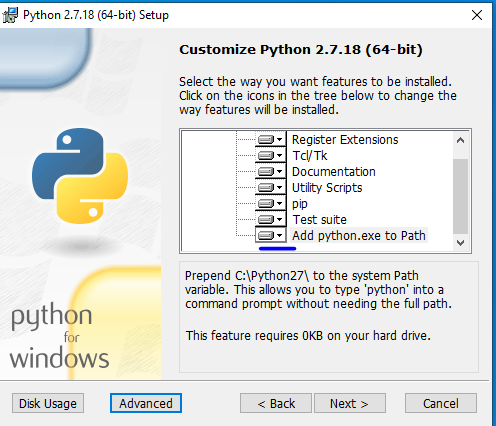
Once that is done, open up the command prompt anywhere and just enter python and you should see the interpreter shell.
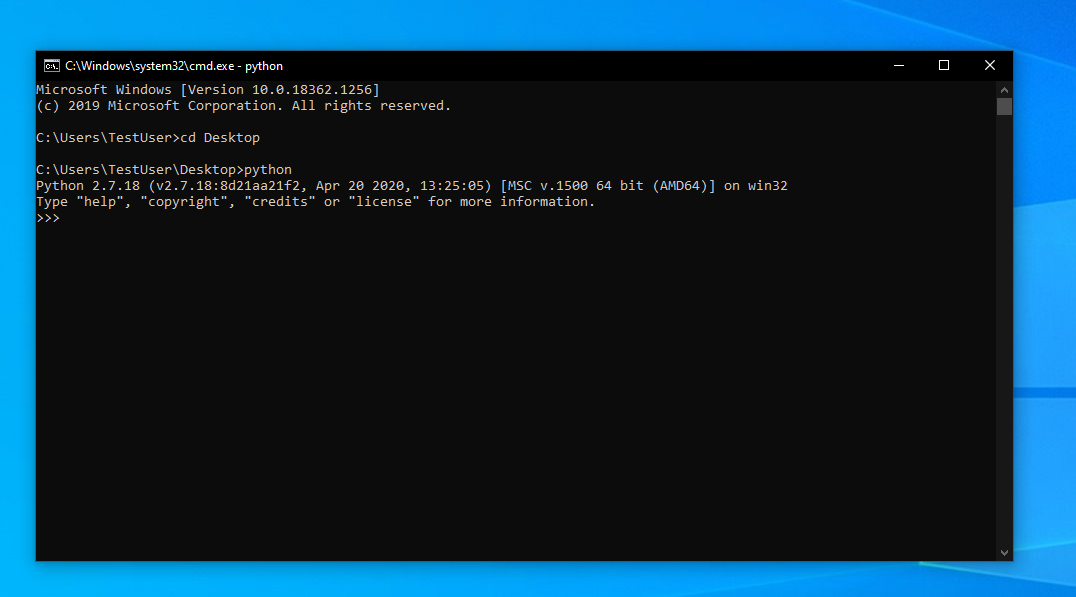
Step 2 - Download/Clone Volatility
Go to https://github.com/volatilityfoundation/volatility/ and download the repository to your local system. If you prefer to use git and clone it instead, you can do that too. Whatever works.

Step 3 - Resolving Dependency issues
Extract it to a preferred location (mine is Desktop) and open a Powershell window there.
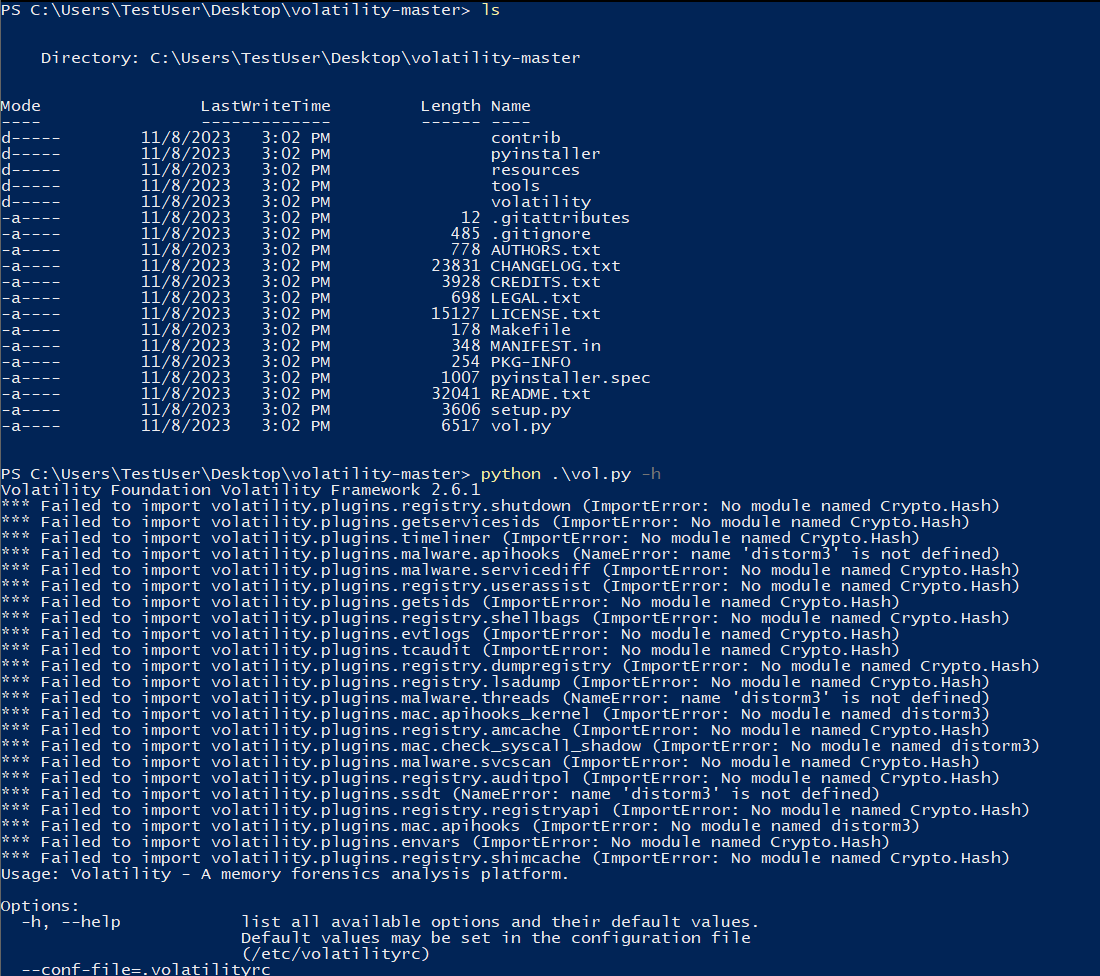
After running the command mentioned in the above screenshot python vol.py -h we can see volatility throw a few “warnings”. This indicates missing dependencies. To resolve the issue enter the following commands -
pip install distorm3==3.5.2
Now when you run that command, you should see the following error

However, the suggested link does not work. We use the Wayback machine to get this done. Navigate to https://web.archive.org/web/20190720195601/http://www.microsoft.com/en-us/download/confirmation.aspx?id=44266 and download the installer. After that execute the VCForPython27.msi binary. Once it is installed, run the above commands again. This time distorm should be successfully installed.
<--snip-->
Installed c:\python27\lib\site-packages\distorm3-3.5.2-py2.7-win-amd64.egg
Processing dependencies for distorm3==3.5.2
Finished processing dependencies for distorm3==3.5.2
Now we need to install other remaining dependencies. For this run
pip install pycrypto==2.6.1
pip install yara-python==3.11.0
pip install Pillow==2.7.0
pip install openpyxl
pip install ujson==1.35
After this is done, you can run python vol.py -h and we can see that we no longer come across any errors. Everything is sorted now. All we need now is the exe.
Step 4 - Compiling EXE Using PyInstaller
PyInstaller is the Python module needed for this. To install the one stable for our needs run
pip install pyinstaller==3.5
Once it is installed, navigate to the volatility folder and run the following
pyinstaller --onefile pyinstaller.spec
You will now find a binary volatility.exe within the dist directory.
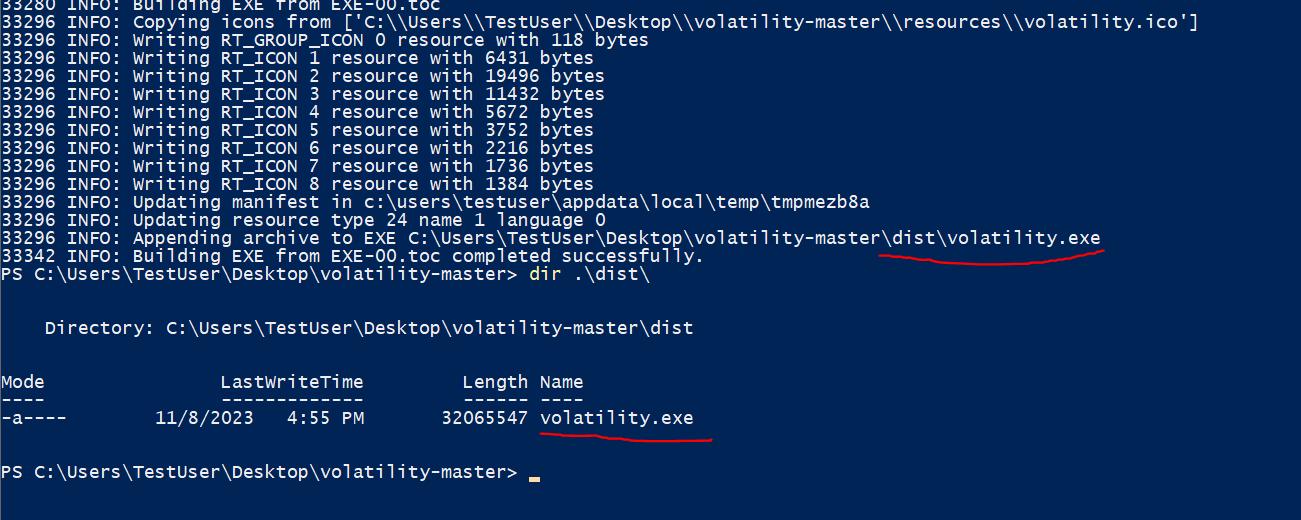
Step 5 - Test Run
Here is a small video of me testing the newly compiled exe on a MemLabs image.
Compiling Volatility 3 For Windows
Step 1 - Install Python 3
Note: At the time of writing this article, Python 3.12 is the latest version but I am using Python 3.10.6
Just like what we did when installing Python 2, here also, make sure to select the “Add python.exe to PATH” option.
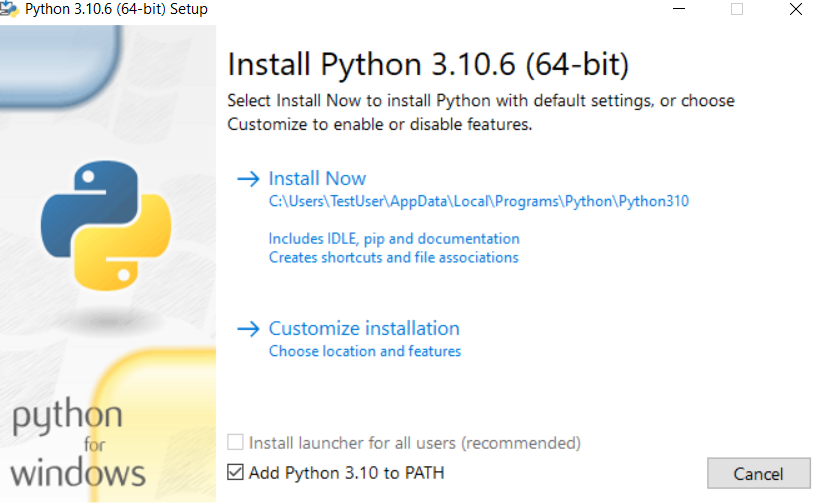
Step 2 - Download/Clone Volatility 3
Download/Clone the Volatility 3 repository from here - https://github.com/volatilityfoundation/volatility3
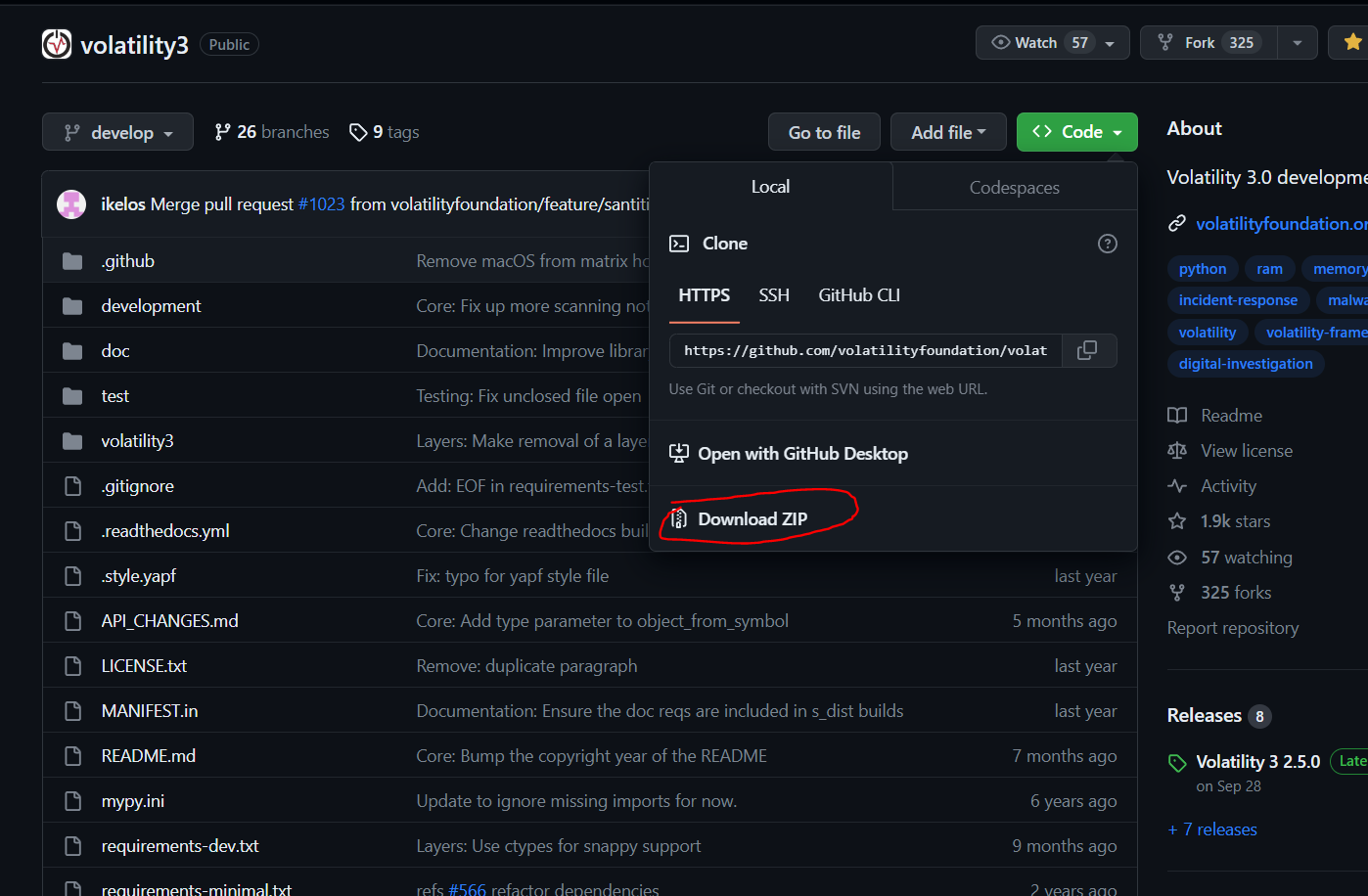
Step 3 - Install Dependencies
Open a cmd/PowerShell window in the vol3 directory and run the following command
pip install -r .\requirements.txt
If you see the following error, go to https://visualstudio.microsoft.com/visual-cpp-build-tools/ and install the latest version of Microsoft Visual C++.
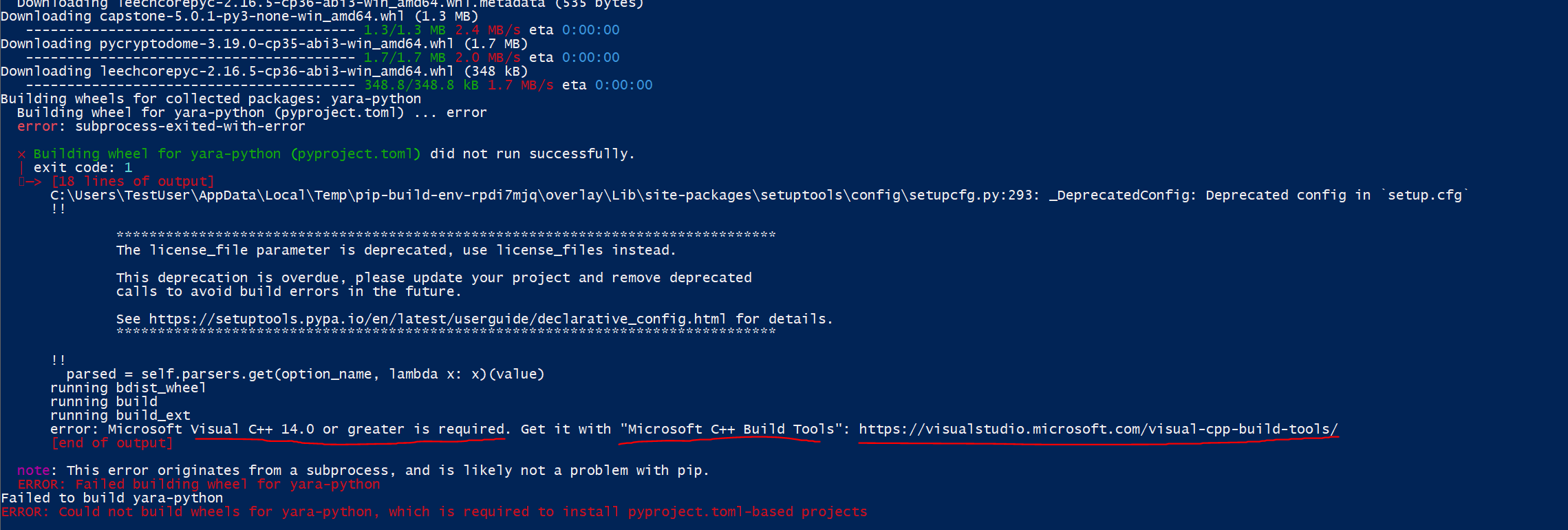
After the required C++ version is installed re-run the command again and you should see this

Step 4 - Compiling EXE Using PyInstaller
Install pyInstaller using
pip install pyinstaller==6.1.0
Once that is done, navigate to the volatility3 repo and run
pyinstaller vol.spec
And you should see this
265 INFO: PyInstaller: 6.1.0
281 INFO: Python: 3.10.6
281 INFO: Platform: Windows-10-10.0.18362-SP0
3109 INFO: Extending PYTHONPATH with paths
['C:\\Users\\TestUser\\Desktop\\volatility3-develop']
3234 INFO: Appending 'binaries' from .spec
3234 INFO: Appending 'datas' from .spec
.
.
.
.
<snip>
.
.
.
15672 INFO: checking EXE
15687 INFO: Building EXE because EXE-00.toc is non existent
15687 INFO: Building EXE from EXE-00.toc
15687 INFO: Copying bootloader EXE to C:\Users\TestUser\Desktop\volatility3-develop\dist\vol.exe
15687 INFO: Copying icon to EXE
15687 INFO: Copying 0 resources to EXE
15687 INFO: Embedding manifest in EXE
15703 INFO: Appending PKG archive to EXE
15719 INFO: Fixing EXE headers
15859 INFO: Building EXE from EXE-00.toc completed successfully.
The compiled executable should be present in the dist folder.
Optional - Volshell
Compiling volshell is very easy as well. Now that all the dependencies are satisfied, a simple one-line command would be enough
pyinstaller volshell.spec
296 INFO: PyInstaller: 6.1.0
296 INFO: Python: 3.10.6
296 INFO: Platform: Windows-10-10.0.18362-SP0
2281 INFO: Extending PYTHONPATH with paths
['C:\\Users\\TestUser\\Desktop\\volatility3-develop']
2405 INFO: Appending 'binaries' from .spec
2405 INFO: Appending 'datas' from .spec
2421 INFO: checking Analysis
2421 INFO: Building Analysis because Analysis-00.toc is non existent
2421 INFO: Initializing module dependency graph...
2421 INFO: Caching module graph hooks...
2453 INFO: Analyzing base_library.zip ...
.
.
.
.
.
<snip>
.
.
.
.
8062 INFO: Loading module hook 'hook-distutils.util.py' from 'C:\\Users\\TestUser\\AppData\\Local\\Programs\\Python\\Python310\\lib\\site-packages\\PyInstaller\\hooks'...
8234 INFO: Loading module hook 'hook-packaging.py' from 'C:\\Users\\TestUser\\AppData\\Local\\Programs\\Python\\Python310\\lib\\site-packages\\PyInstaller\\hooks'...
8484 INFO: Processing pre-safe import module hook win32com from 'C:\\Users\\TestUser\\AppData\\Local\\Programs\\Python\\Python310\\lib\\site-packages\\_pyinstaller_hooks_contrib\\hooks\\pre_safe_import_module\\hook-win32com.py'.
8937 INFO: Loading module hook 'hook-setuptools.msvc.py' from 'C:\\Users\\TestUser\\AppData\\Local\\Programs\\Python\\Python310\\lib\\site-packages\\PyInstaller\\hooks'...
9234 INFO: Loading module hook 'hook-difflib.py' from 'C:\\Users\\TestUser\\AppData\\Local\\Programs\\Python\\Python310\\lib\\site-packages\\PyInstaller\\hooks'...
9796 INFO: Looking for ctypes DLLs
9812 INFO: Analyzing run-time hooks ...
9812 INFO: Including run-time hook 'C:\\Users\\TestUser\\AppData\\Local\\Programs\\Python\\Python310\\lib\\site-packages\\PyInstaller\\hooks\\rthooks\\pyi_rth_inspect.py'
9812 INFO: Including run-time hook 'C:\\Users\\TestUser\\AppData\\Local\\Programs\\Python\\Python310\\lib\\site-packages\\PyInstaller\\hooks\\rthooks\\pyi_rth_pkgutil.py'
9812 INFO: Including run-time hook 'C:\\Users\\TestUser\\AppData\\Local\\Programs\\Python\\Python310\\lib\\site-packages\\PyInstaller\\hooks\\rthooks\\pyi_rth_multiprocessing.py'
9812 INFO: Including run-time hook 'C:\\Users\\TestUser\\AppData\\Local\\Programs\\Python\\Python310\\lib\\site-packages\\PyInstaller\\hooks\\rthooks\\pyi_rth_pkgres.py'
9827 INFO: Including run-time hook 'C:\\Users\\TestUser\\AppData\\Local\\Programs\\Python\\Python310\\lib\\site-packages\\PyInstaller\\hooks\\rthooks\\pyi_rth_setuptools.py'
9827 INFO: Looking for dynamic libraries
10296 INFO: Extra DLL search directories (AddDllDirectory): []
10296 INFO: Extra DLL search directories (PATH): []
10563 INFO: Warnings written to C:\Users\TestUser\Desktop\volatility3-develop\build\volshell\warn-volshell.txt
10624 INFO: Graph cross-reference written to C:\Users\TestUser\Desktop\volatility3-develop\build\volshell\xref-volshell.html
10656 INFO: checking PYZ
10656 INFO: Building PYZ because PYZ-00.toc is non existent
10656 INFO: Building PYZ (ZlibArchive) C:\Users\TestUser\Desktop\volatility3-develop\build\volshell\PYZ-00.pyz
11171 INFO: Building PYZ (ZlibArchive) C:\Users\TestUser\Desktop\volatility3-develop\build\volshell\PYZ-00.pyz completed successfully.
11187 INFO: checking PKG
11187 INFO: Building PKG because PKG-00.toc is non existent
11187 INFO: Building PKG (CArchive) volshell.pkg
13266 INFO: Building PKG (CArchive) volshell.pkg completed successfully.
13266 INFO: Bootloader C:\Users\TestUser\AppData\Local\Programs\Python\Python310\lib\site-packages\PyInstaller\bootloader\Windows-64bit-intel\run.exe
13266 INFO: checking EXE
13281 INFO: Building EXE because EXE-00.toc is non existent
13297 INFO: Building EXE from EXE-00.toc
13297 INFO: Copying bootloader EXE to C:\Users\TestUser\Desktop\volatility3-develop\dist\volshell.exe
13328 INFO: Copying icon to EXE
13328 INFO: Copying 0 resources to EXE
13328 INFO: Embedding manifest in EXE
13328 INFO: Appending PKG archive to EXE
13343 INFO: Fixing EXE headers
13421 INFO: Building EXE from EXE-00.toc completed successfully.
The compiled exe should be in the dist folder.
Conclusion
This article aimed to make the process of compiling your volatility binary easy and I hope the objective was achieved. If in case you run into more errors, please ping me on Twitter at https://twitter.com/_abhiramkumar.
Also, I am now maintaining a repository which contains the volatility binaries - https://github.com/stuxnet999/volatility-binaries. If there are any errors here please let me know and I will fix them.